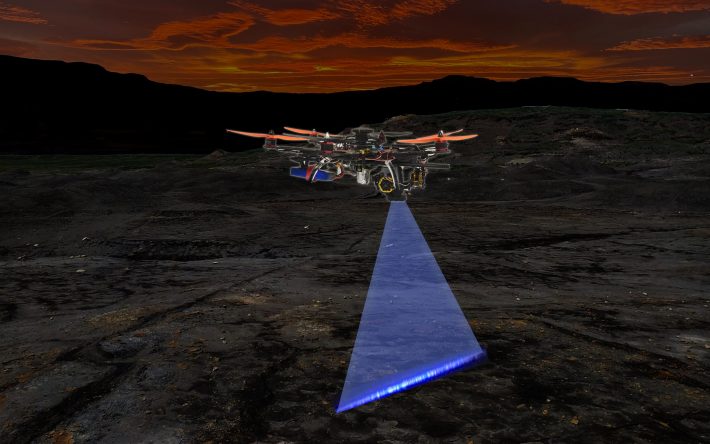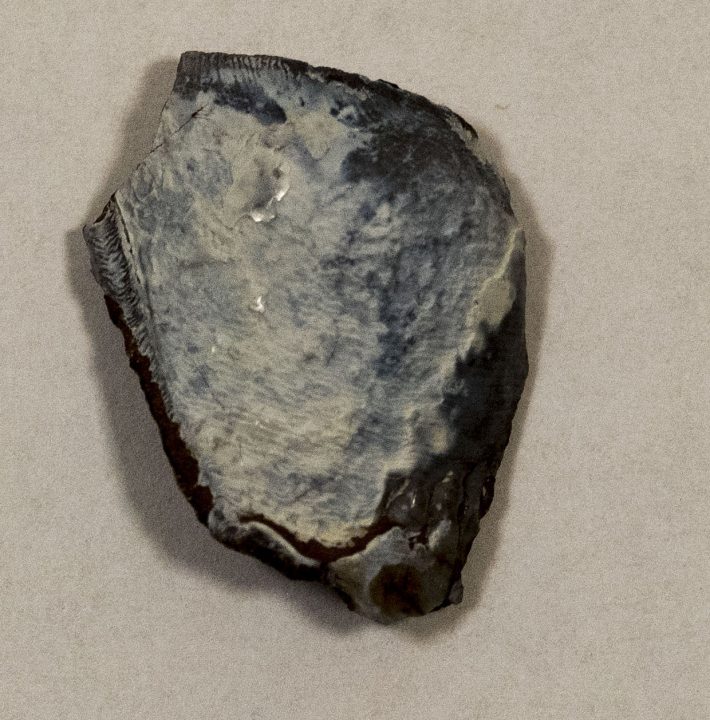University of Hong Kong – codeveloped automated laser-scanning ‘hunter drone’ seeks out fossils, minerals and biological targets
University of Hong Kong press release.
Science fiction has machine-intelligent hunter drones and they have now become science fact with a new University of Hong Kong (HKU) – codeveloped autonomous ‘hunter drone’ that seeks out targets at night using a scanning laser. The article is published in Methods in Ecology and Evolution.

The technique – Laser-Stimulated Fluorescence (LSF) – was codeveloped at HKU and has been highly successful in palaeontology, making fossil bones glow and revealing otherwise invisible details like skin and cartilage. The application of LSF to an aerial system is possible because of the laser’s ability to project over great distances with little loss in power.
HKU Research Assistant Professor Dr. Michael Pittman (Vertebrate Palaeontology Laboratory, Division of Earth and Planetary Science & Department of Earth Sciences) and his colleague Thomas G Kaye of the Foundation for Scientific Advancement made this a reality by developing a fully autonomous LSF drone system. “Nicknamed ‘Laser Raptor’, this system is designed to more efficiently seek out fossils exposed on the surface in the field”, said Dr. Pittman.
Loaded with pre-programmed flight paths during the day, this prototype was launched at night in the badlands of Arizona and Wyoming, USA to search for fossils. Laser Raptor flies rapidly to search locations using its on-board navigation and then descends and maintains an altitude of 4 metres above ground so it can ‘mow the lawn’ in search of glowing targets as small as a thumbnail. After each ‘mission’ is complete, a video of the laser scan is processed to find hot spots that are investigated the next day, leading to the recovery of new fossil specimens.

Fluorescence is extremely sensitive to differences in mineral composition. Although Laser Raptor was designed to locate fossils, it is ready to seek out a whole range of fluorescent targets including minerals e.g. to study rare and unusual geology or in search of mining materials like gemstones, certain organisms like scorpions, shellfish and cyanobacteria, and even archaeological artefacts and structures.
Asked about future plans, Thomas Kaye replied, ‘As members of HKU’s Laboratory of Space Research, Dr. Pittman and I are currently working to develop LSF applications for the study of geologic landscapes beyond Earth.’
Watch a video of the author’s demonstrating their drone here:
You can read the article for free (for a limited time) here:
, . Fluorescence‐based detection of field targets using an autonomous unmanned aerial vehicle system. Methods Ecol Evol. 2020; 00: 1– 9. https://doi.org/10.1111/2041-210X.13402
Media contacts:
Ms. Cindy Chan, Assistant Director of Communications of HKU Faculty of Science
Tel: 3917 5286; email: cindycst@hku.hk
Dr Michael Pittman, Research Assistant Professor of HKU Division of Earth and Planetary Science
Email: mpittman@hku.hk).
Like what we stand for?
Support our mission and help develop the next generation of ecologists by donating to the British Ecological Society.